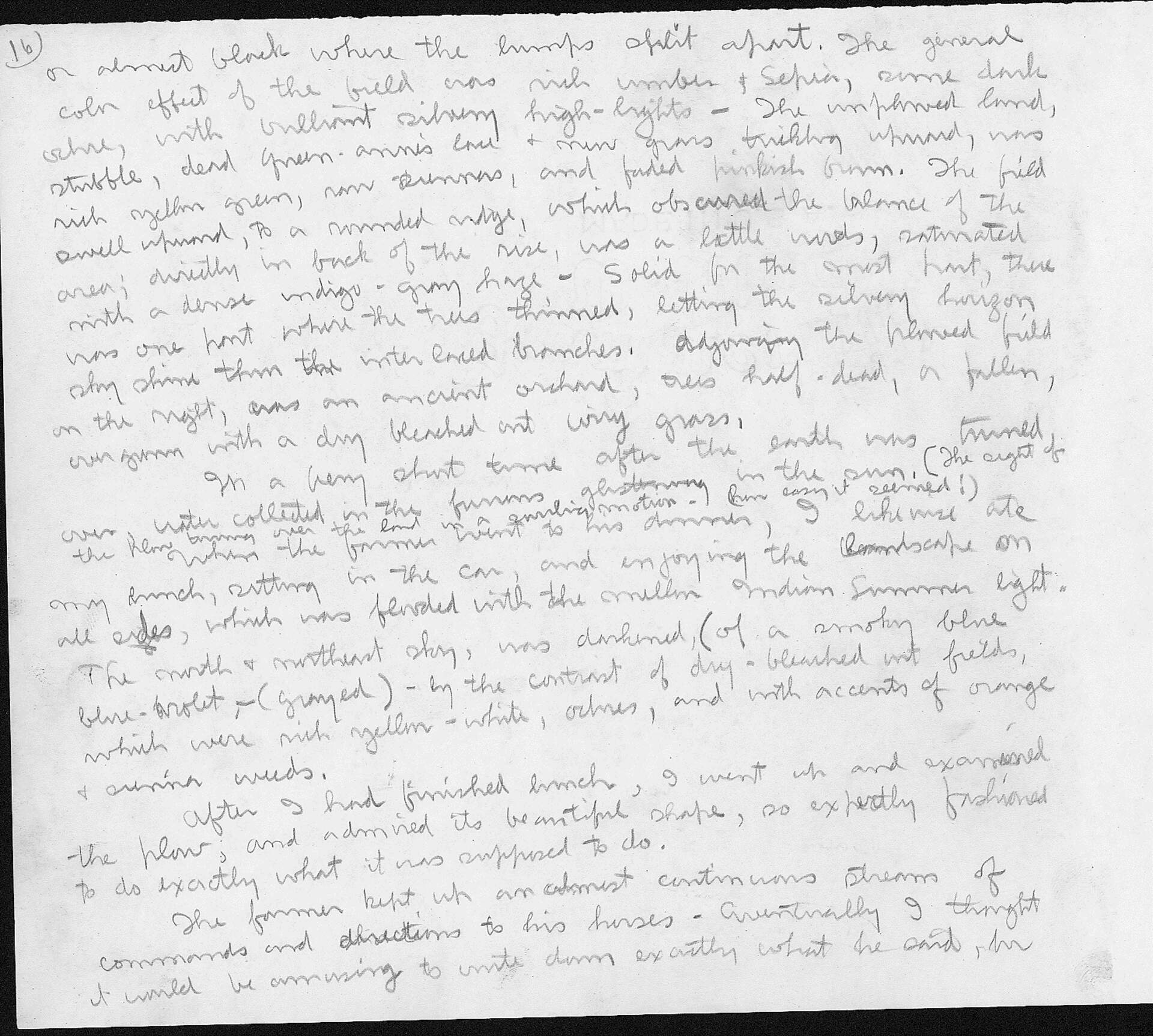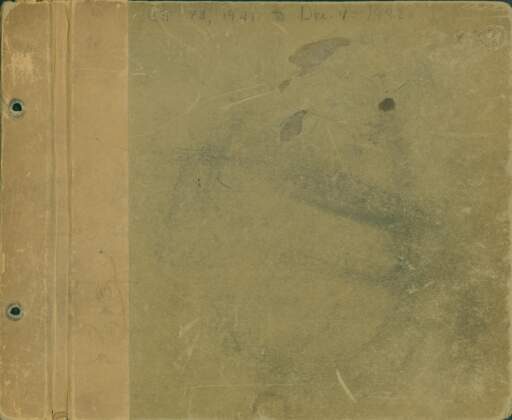Charles E. Burchfield (1893-1967)Volume 44, Page 16
December 3, 1941
cardboard notebook bound with string
8 1/2 x 11 inches
Gift of the Charles E. Burchfield Foundation, 2000
16. or almost black where the lumps split apart. The general color effect of the field was rich umber + Sepia, some dark ochre, with brilliant silvery high-lights – The unplowed land, stubble, dead queen-anne’s lace + new grass trickling upward, was rich yellow green, raw siennas, and a faded pinkish brown. The field swell (sic) upward, to a rounded ridge, which obscured the balance of the area; directly in back of the rise, was a little woods, saturated with a dense indigo-gray haze – solid for the most part, there was one part where the trees thinned, letting the silvery horizon sky shine thru the interlaced branches. Adjoining the plowed field on the right, was an ancient orchard, trees half-dead, or fallen, overgrown with a dry bleached out wiry grass.
In a very short time after the earth was turned over water collected in the furrows glistening in the sun. (The sight of the plow turning over the land in a swirling motion – (how easy it seemed!)
When the farmer went to his dinner, I likewise ate my lunch, sitting in the car, and enjoying the landscape on all sides, which was flooded with the mellow Indian Summer light.
The north + northwest sky, was darkened, (of a smoky blue blue-violet – (grayed) – by the contrast of dry-bleached out fields, which were rich yellow-white, ochres, and with accents or arrange + sienna weeds.
After I had finished lunch, I went up and examined the plow; and admired its beautiful shape, so expertly fashioned to do exactly what it was supposed to do.
The farmer kept up an almost continuous stream of commands and direction to his horses – Eventually I thought it would be amusing to write down exactly what he said, for


